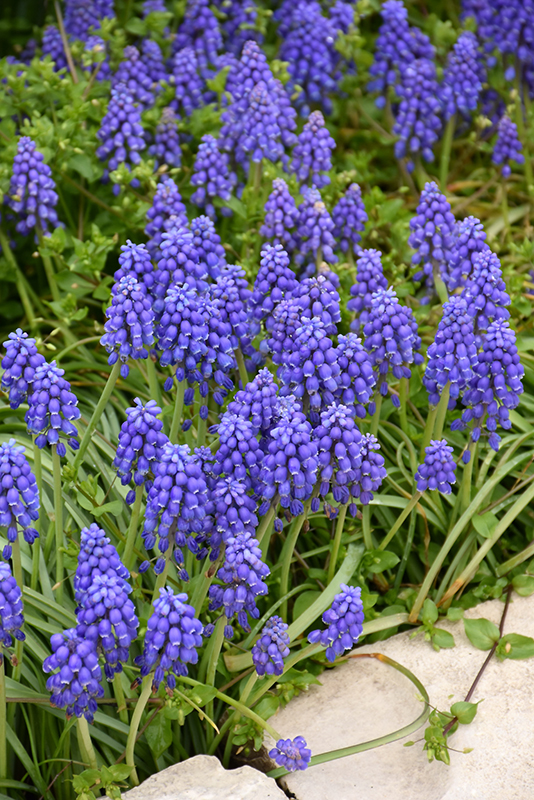Plant Height: 4 inches
Flower Height: 8 inches
Spread: 4 inches
Sunlight:
![]()
Hardiness Zone: 4
Ornamental Features
Grape Hyacinth has masses of beautiful spikes of blue bell-shaped flowers rising above the foliage in mid spring, which are most effective when planted in groupings. Its grassy leaves remain green in color throughout the season.
Landscape Attributes
Grape Hyacinth is an herbaceous perennial with an upright spreading habit of growth. Its relatively fine texture sets it apart from other garden plants with less refined foliage.
This is a relatively low maintenance plant, and should not require much pruning, except when necessary, such as to remove dieback. Deer don't particularly care for this plant and will usually leave it alone in favor of tastier treats. It has no significant negative characteristics.
Grape Hyacinth is recommended for the following landscape applications;
- Mass Planting
- General Garden Use
- Naturalizing And Woodland Gardens
Planting & Growing
Grape Hyacinth will grow to be only 4 inches tall at maturity extending to 8 inches tall with the flowers, with a spread of 4 inches. It grows at a medium rate, and under ideal conditions can be expected to live for approximately 5 years. As an herbaceous perennial, this plant will usually die back to the crown each winter, and will regrow from the base each spring. Be careful not to disturb the crown in late winter when it may not be readily seen! As this plant tends to go dormant in summer, it is best interplanted with late-season bloomers to hide the dying foliage.
This plant should only be grown in full sunlight. It does best in average to evenly moist conditions, but will not tolerate standing water. It may require supplemental watering during periods of drought or extended heat. It is not particular as to soil type or pH. It is somewhat tolerant of urban pollution. This species is not originally from North America. It can be propagated by multiplication of the underground bulbs.

